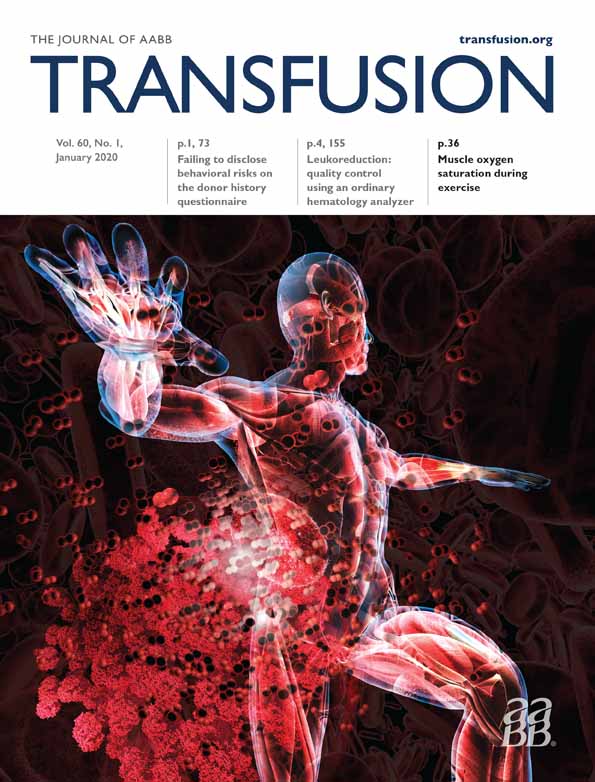The impact of age and sex on first-time donor return behavior
Abstract
BACKGROUND
This study examined the impact of age and sex of first-time donors who had not experienced an adverse event or deferral on their likelihood of and time to return.
STUDY DESIGN AND METHODS
On behalf of the Biomedical Excellence for Safer Transfusion (BEST) Collaborative, international blood collection agencies (BCAs) were invited to provide data on first-time whole blood donors in 2014, including initial presentation date, collection site type, age, sex, blood type, return to donate within 24 months (yes/no), and subsequent presentation date.
RESULTS
Eight BCAs contributed 706,789 records. The overall odds of returning to donate were slightly lower in female versus male donors, and the overall age trend was U-shaped with younger and older donors having higher odds for returning relative to middle-aged donors. However, variations by BCA were observed. Specifically, in three BCAs, women had higher odds of returning to donate than men. Further, while across seven BCAs the smallest cohort of older first-time donors returned at a higher rate and returned more quickly than middle-aged first-time donors, the behavior of younger donors varied substantially between BCAs.
CONCLUSION
While older first-time donors are more likely to return and return more quickly than middle-aged donors they make up only a small proportion of first-time donors, whereas the larger group of younger donors exhibits less clear patterns of return compared to middle-aged donors. Further research is needed to determine whether targeting the recruitment of older donors or bolstering retention of middle-aged donors would be most effective in maintaining the blood supply.
CONFLICT OF INTEREST
The authors have disclosed no conflicts of interest.




